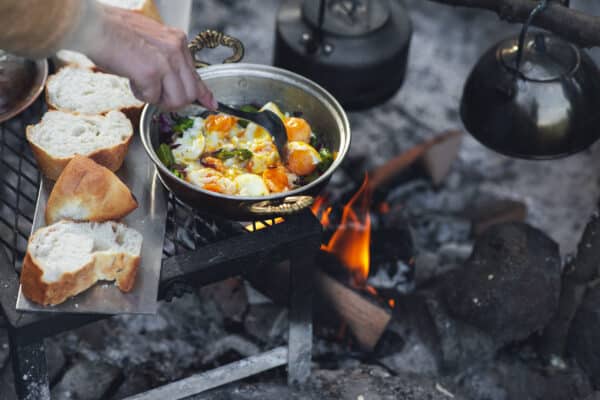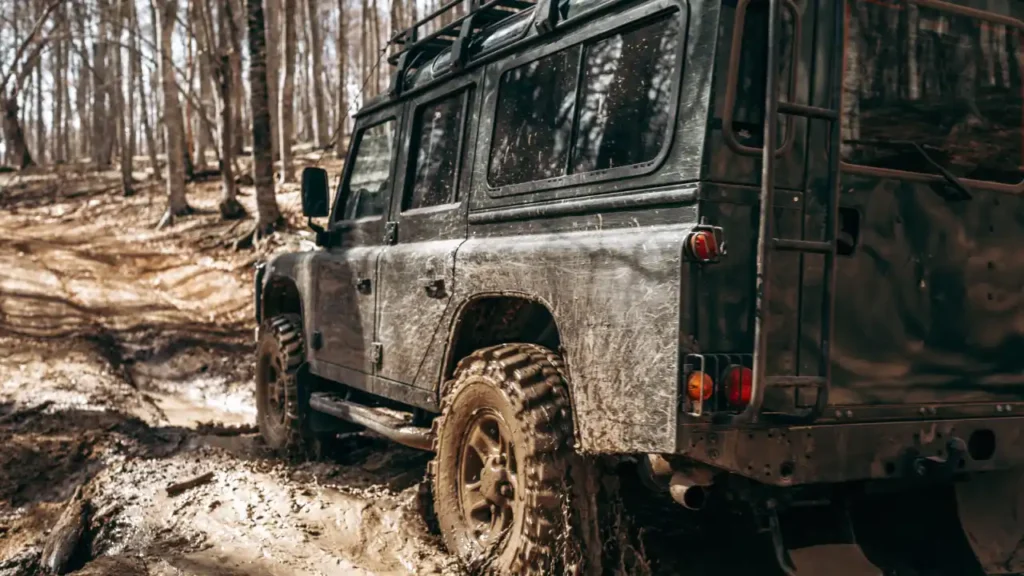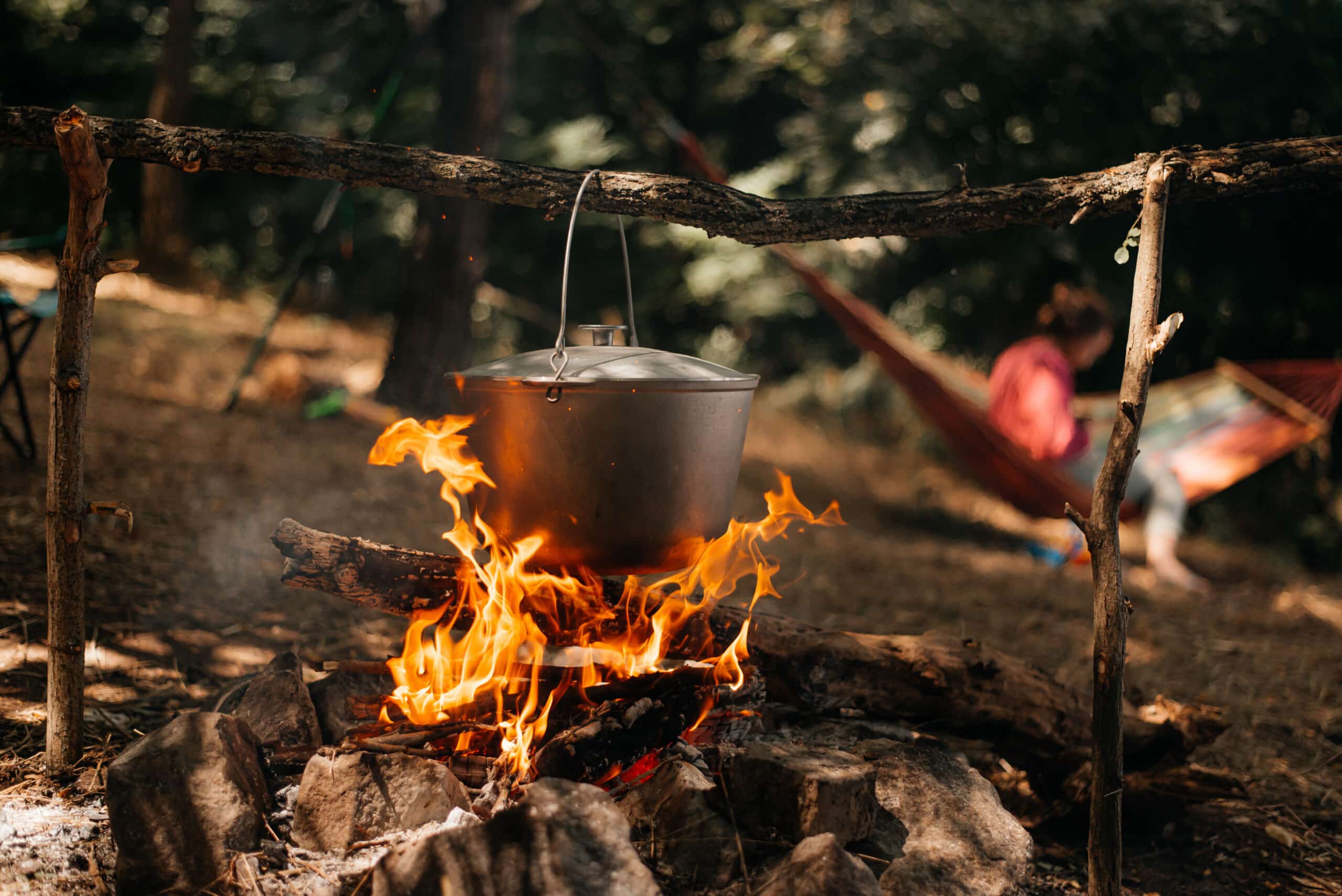There’s something magical about cooking over a campfire—the crackling flames, the smoky smell, and then enjoying that meal under the stars. But if you’re new to campfire cooking, the idea can feel a bit daunting. What tools do you really need? How do you avoid overpacking? Don’t worry—this guide will walk you through the essentials for stress-free campfire cooking and help you enjoy delicious meals in the great outdoors.
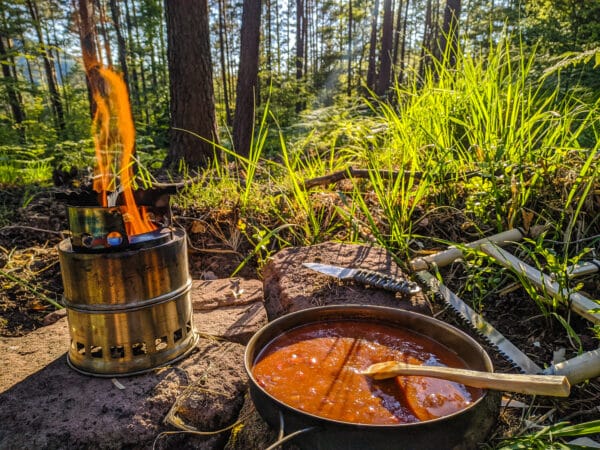
1. The Right Cookware
When it comes to cooking over a campfire, not all pots and pans are created equal. Using the wrong materials can result in scorched food or ruined cookware.
What You Need:
- Cast Iron Skillet or Dutch Oven: Cast iron is durable, holds heat well, and can handle direct flames. A skillet is perfect for frying or sautéing, while a Dutch oven is ideal for stews, casseroles, or even baking bread.
- Stainless Steel Pots: Lightweight stainless steel pots are great for boiling water or making pasta. Avoid non-stick cookware, as the coating can be damaged by high heat.
- Grill Grate: A portable grill grate placed over your fire allows for even cooking and supports your pots and pans.
Pro tip: Pre-season your cast iron cookware before your trip to make it non-stick and easy to clean.
2. Cooking Utensils
You don’t need your entire kitchen drawer of tools, but a few key items will make campfire cooking easier and more enjoyable.
What You Need:
- Tongs: For flipping food or moving hot items around the fire.
- Spatula: A sturdy spatula is essential for flipping burgers, pancakes, or eggs.
- Ladle or Spoon: Great for stirring stews or serving soups.
- Knife and Cutting Board: A sharp knife and a lightweight cutting board are must-haves for chopping veggies or slicing meat.
- Heat-Resistant Gloves: These protect your hands when handling hot cookware.
Pro tip: Opt for multi-use utensils to save space, like a spork or a combo knife/spatula tool.
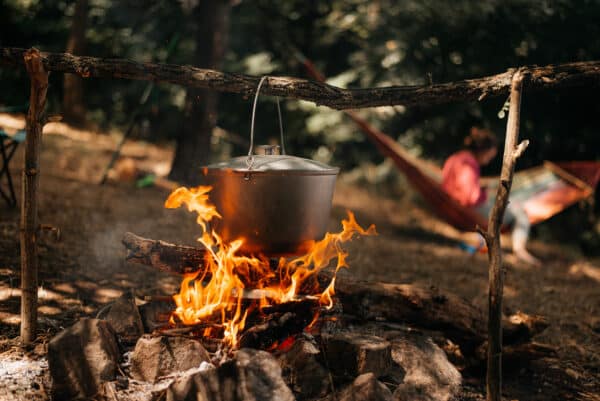
3. Fuel and Firestarters
A good fire is the foundation of campfire cooking. Having the right tools to start and maintain it is essential for a successful meal.
What You Need:
- Firewood: Use dry, untreated wood for cooking. Hardwoods like eucalyptus or ironbark burn longer and provide consistent heat.
- Kindling and Tinder: Small twigs, dry leaves, or firelighters help get your fire going.
- Firestarters: Waterproof matches, a lighter, or a magnesium fire starter are all reliable options for lighting your fire.
Pro tip: Pack some cotton balls soaked in petroleum jelly—they’re lightweight, compact, and make excellent firestarters in any weather.
4. Food Storage and Prep
Keeping your ingredients fresh and organized is half the battle when cooking outdoors. Proper storage ensures that you can cook without worrying about spoiled food or wildlife raids.
What You Need:
- Cooler or Portable Fridge: A high-quality cooler keeps perishable items like meat and dairy fresh. Add ice packs or frozen water bottles for extended cooling.
- Airtight Containers and Ziplock Bags: Use these for storing pre-chopped ingredients, spices, and leftovers. They also help keep your food safe from insects and animals.
- Foil: Aluminium foil is a campfire cooking hero. Wrap veggies, fish, or meat in foil packets for easy, no-mess meals.
Pro tip: Pre-chop and marinate ingredients at home to save time and effort at the campsite.
5. Campfire Cooking Tools
Certain tools are designed specifically for campfire cooking and can elevate your outdoor culinary game.
What You Need:
- Roasting Sticks: Ideal for skewering sausages, marshmallows, or veggies for a fun and simple meal.
- Pie Iron or Sandwich Press: Perfect for making toasted sandwiches, jaffles, or even desserts like fruit-filled pastries.
- Tripod: A tripod allows you to hang pots or kettles over the fire for slow cooking or boiling water.
- Campfire Kettle: A durable, heat-resistant kettle is great for boiling water for tea, coffee, or instant noodles.
Pro tip: Look for collapsible or foldable tools to save space in your camping kit.
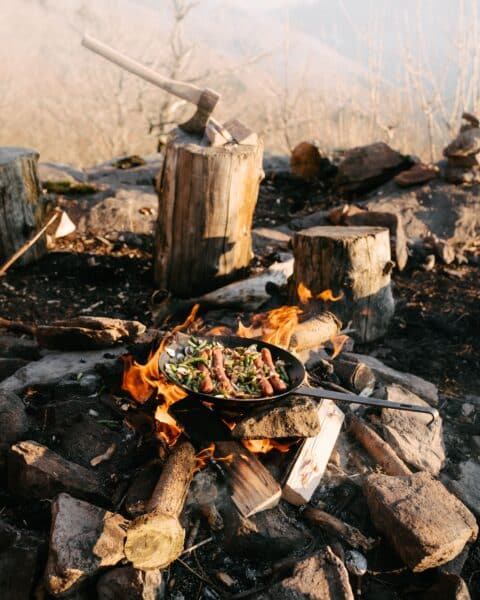
6. Cooking Staples
A few pantry essentials will go a long way in making your meals flavourful and versatile. Choose lightweight, non-perishable items that pack a punch.
What You Need:
- Oil or Butter: For cooking and seasoning. Choose small, portable containers to save space.
- Salt, Pepper, and Basic Spices: A small spice kit can transform even simple meals. Consider pre-mixing your favourite seasonings for easy use.
- Rice, Pasta, or Couscous: These staples are easy to cook and pair well with a variety of proteins and veggies.
- Canned Goods: Beans, tomatoes, or soups are versatile and require no refrigeration.
Pro tip: Don’t forget your condiments! Small sachets of ketchup, mustard, or hot sauce are great for adding flavour without extra bulk.
7. Lighting for Cooking
Cooking over a campfire doesn’t always happen in daylight. Having proper lighting is essential for safely preparing and cooking meals after dark.
What You Need:
- Headlamp: A hands-free option that illuminates your cooking area.
- Lantern: Provides a wide beam of light for your campsite.
- Portable LED Lights: Clip-on lights can be attached to your grill or cooking setup for better visibility.
Pro tip: Bring spare batteries or rechargeable lights with a portable power bank to keep your cooking station well-lit.
8. Cleanup Gear
Nobody likes cleaning up, but leaving your site spotless is an essential part of responsible camping. With the right tools, cleanup can be quick and easy.
What You Need:
- Biodegradable Soap: Safe for the environment and effective for washing dishes.
- Sponge and Scrubber: Choose compact, lightweight options for scrubbing pots and pans.
- Dish Towel: A quick-drying towel is perfect for drying dishes and wiping surfaces.
- Trash Bags: Heavy-duty bags for packing out all your rubbish.
Pro tip: Line your pots with foil before cooking—it makes cleanup a breeze.
9. Meal Ideas for Beginners
Not sure what to cook? Here are a few simple and delicious meal ideas for first-time campfire cooks:
- Foil Packets: Combine chopped veggies, chicken, or fish with olive oil and seasoning. Wrap tightly in foil and cook over hot coals.
- Jaffles: Fill bread slices with cheese, ham, or baked beans, and toast them in a pie iron.
- Campfire Stew: Toss diced meat, veggies, and canned tomatoes into a Dutch oven and let it simmer over low heat.
- Damper Bread: Mix self-raising flour, salt, and water to make a dough, then bake it in a Dutch oven or wrapped around a stick over the fire.
- S’mores: Roast marshmallows and sandwich them between biscuits with a square of chocolate.
Campfire cooking doesn’t have to be complicated or overwhelming. With the right tools, a bit of preparation, and some creativity, you can whip up hearty, delicious meals that make your camping experience even more memorable. Start with these essentials, keep it simple, and enjoy the process of cooking in the great outdoors.
